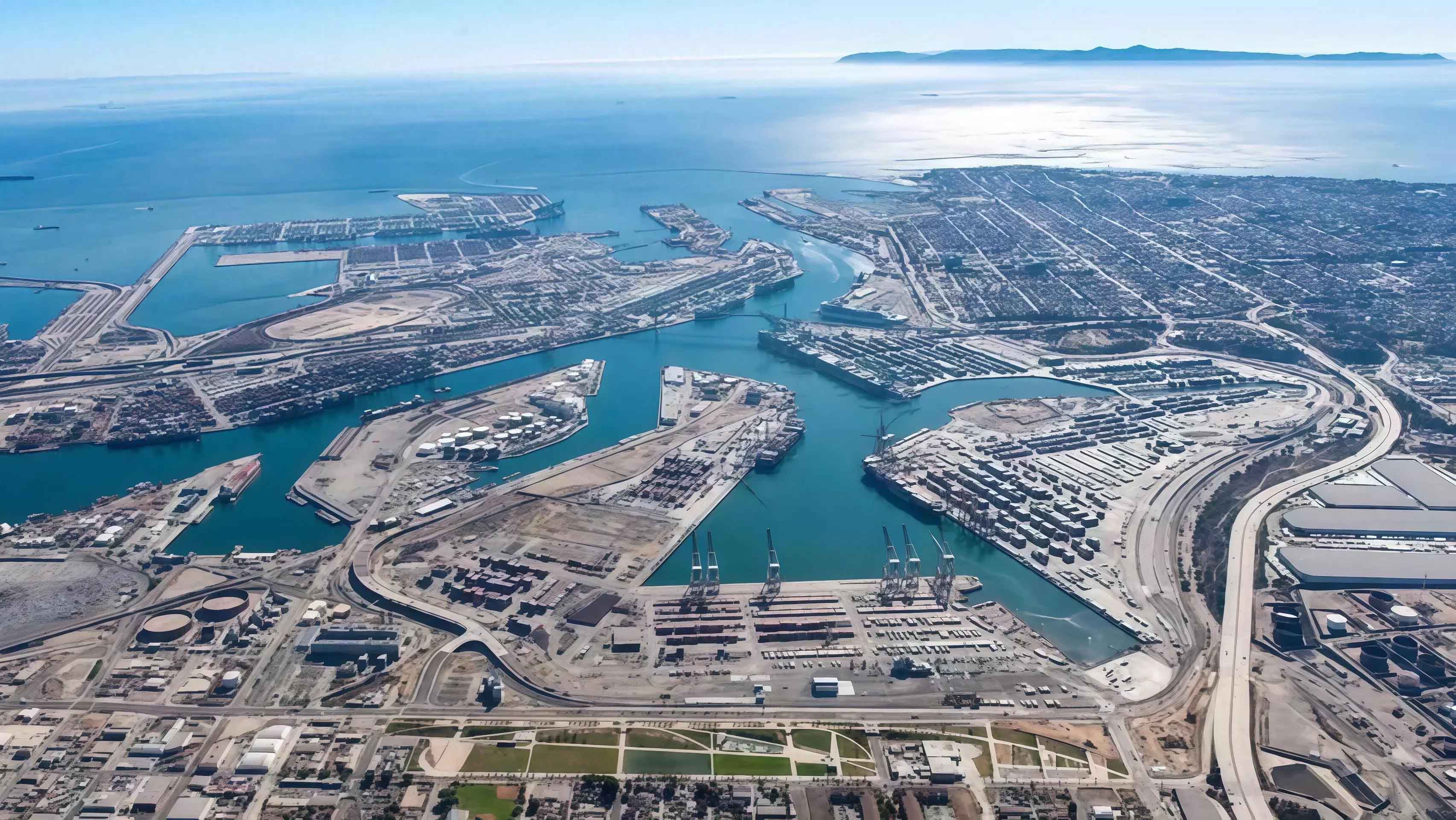
作为北美最繁忙港口,洛杉矶港2024年外积压超2.4万个集装箱,需14周清理。
为应对压力,美国政府投资20亿美元扩建自动化码头,预计 2025 年吞吐量提升至1,200万TEU。
然而,自动化推进面临多重挑战:
劳资博弈:港口工人罢工频繁,工会反对自动化设备替代人工,导致洛杉矶港等枢纽自动化水平滞后于欧洲同行。例如,长滩港集装箱码头(LBCT)等少数自动化码头仅替代约5%的岗位,但引发工会强烈抵制。
效率瓶颈:尽管扩建,但港口拥堵问题仍存。洛杉矶港进口量增长22%,船舶排队超72小时,部分卖家支付万元 “插队费” 抢舱位,叠加关税窗口期结束后的 “报复性补货”,可能再度引发供应链紊乱。
技术投资:港口运营商与物流企业合作引入智能仓储、物联网监控等技术,试图通过数字化管理提升周转效率,但老旧设施改造需巨额投入,且本土设备供应商能力不足,部分关键设备依赖中国振华重工
Expansion and Automation Controversy at the Port of Los Angeles
As North America's busiest port, the Port of Los Angeles faced a backlog of over 24,000 containers in 2024, requiring 14 weeks to clear. To address this pressure, the U.S. government has invested $2 billion to expand automated terminals, with the goal of boosting annual throughput to 12 million TEU by 2025. However, the push for automation confronts multiple challenges:
Labor-Management Standoff: Frequent strikes by port workers and union opposition to automation equipment replacing manual labor have left hubs like the Port of Los Angeles lagging behind their European counterparts in automation. For example, while automated terminals such as the Long Beach Container Terminal (LBCT) have replaced only about 5% of jobs, they have triggered intense resistance from unions.
Efficiency Bottlenecks: Despite expansion, port congestion persists. In May 2025, the Port of Los Angeles saw a 22% surge in imports, with ships queuing for over 72 hours. Some sellers paid tens of thousands of yuan in "queue-jumping fees" to secure berths. Combined with "retaliatory restocking" after the end of tariff windows, this risks reigniting supply chain disruptions.
Technical Investment: Port operators and logistics firms are collaborating to introduce technologies like intelligent warehousing and IoT monitoring to enhance turnover efficiency through digital management. However, upgrading aging infrastructure requires massive investment, and domestic equipment suppliers lack capacity, leaving some critical equipment dependent on China's Zhenhua Heavy Industry.